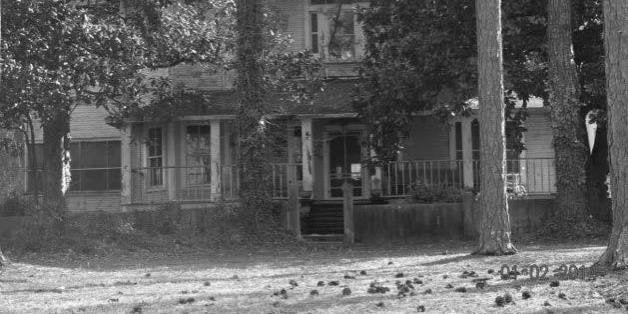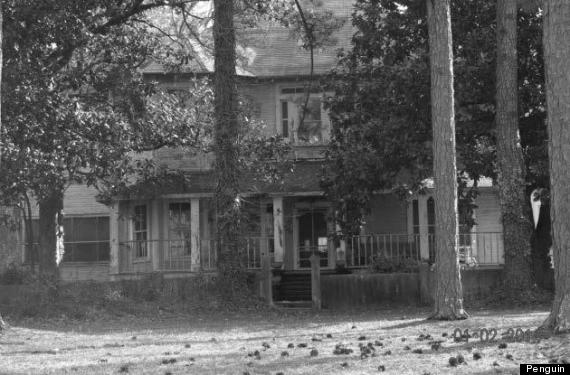
The following is an excerpt from The Mockingbird Next Door by Marja Mills [Penguin Press, $27.95], who, while working for the Chicago Tribune, was granted a rare opportunity to interview Harper Lee, with whom she formed a close friendship over the span of several years. Mills then moved next door to Harper and her sister, Alice, and explored their town while learning about their previously cloistered lives:
The next morning, I stepped out of my motel room and into the furnace of Monroeville in August. The Best Western is on Highway 21, which becomes Alabama Avenue. To reach the courthouse, according to the clerk at the motel, all we had to do was follow the road about five miles. It ended right at the town square. We passed an unremarkable stretch of auto parts places and assorted businesses. Next we came upon the Monroe County Hospital, up a short, steep hill to our left, then a strip mall with a Winn-Dixie supermarket, a Rite Aid, and a dollar store. We passed Radley’s Deli, a weathered gray building, named for Boo Radley. We drove the generic stretch you find anyplace in America -- McDonald’s, Burger King, KFC -- before we spotted the low-slung Vanity Fair building. Pete’s Texaco, a classic, cluttered old gas station, looked like it hadn’t changed much over the decades. On the corner where Alabama Avenue crosses Claiborne Street was Lee Motor Company, also no relation to the author. I had read she didn’t like the mural of a giant mockingbird painted on the side of the brick building. Across the street, on another mural, Scout and Jem stand by the neighborhood tree. The snug 1930s post office anchors the southeast side of the town square. We parked in one of the diagonal parking spaces across the street, in front of the Old Courthouse. Adjacent to it is what everyone calls the new courthouse. It was built in 1963.
Seen from the north, Lee wrote, the Maycomb County courthouse was early Victorian and looked all right. “From the other side, however, Greek revival columns clashed with a big nineteenth-century clock tower housing a rusty unreliable instrument, a view indicating a people determined to preserve every physical scrap of the past." Monroeville once had such an unreliable instrument, a problem addressed with a modern solution. Now when the bell tolls the hours, it is a recording that rings out from the clock tower.
We made our way up a short flight of steps and through the pair of tall, heavy doors that welcome Mockingbird tourists. The courthouse is a magnet for people from around the country looking for a connection to the novel and the movie, those seeking a glimpse of the real world that inspired that fictional one. A small gift shop sold To Kill a Mockingbird T-shirts and key chains, and posters of the town’s annual production of the play.

"Nelle told me that this home, on Claiborne Street, was the inspiration for Boo Radley's house."
Terrence and I ducked our heads into the large courtroom that served as the basis for the one in the movie. It was large, with a curving balcony, painted white, along the second floor, and tall windows overlooking the square. Terrence began taking pictures and I climbed slightly uneven wooden steps to the stuffy second floor.
I heard Kathy McCoy, the director of the museum and its annual To Kill a Mockingbird production, before I saw her. Behind a closed door, she was having a loud, animated phone conversation. Her accent was Southern but not the same kind you heard around here. She was from Kentucky.
I wanted to know what McCoy could tell me about the community, the play she directed each year here at the courthouse, the Lees’ role around town, and who might remember the old Monroeville and be willing to speak with me. I asked her about the tourism here, and what she could tell me about Harper Lee, knowing that tension has sim- mered for years between the Lee sisters and those looking to capitalize on the book’s fame.
"Harper Lee doesn’t want us to commercialize the book," McCoy told me, “but we feel what we’re doing is a service to the community and to the rest of the world.” She and her staff put together a guidebook titled Monroeville: The Search for Harper Lee’s Maycomb and published a guide for tours of the town. On the town square, fans of the novel can peer at the redbrick building where Lee’s father maintained his law office and where Harper Lee wrote part of the novel. On Ala- bama Avenue, they can see the spot where Lee’s childhood home once stood, the spot that now is home to Mel’s Dairy Dream, a white shack with a walk-up window for ordering ice cream cones and burgers. Gone, too, is the home next door, where a young Truman Capote lived for a time with his aunts. A plaque and a little bit of an old stone fence mark the spot.
That day, several people from out of town were looking around the centerpiece of the courthouse, the wood-floored courtroom, where a young Harper Lee had seen her attorney father in action, the one replicated in the movie. Visitors sit in the “colored” balcony, just as Scout did during Tom Robinson’s trial. The bolder ones approach the judge’s bench and lift the gavel, letting it drop with an authoritative rap. Simple props, such as a period calendar, hang on the wall to re-create the Maycomb of the novel for playgoers.
Once you step outside, though, finding the contours and flavor of the Monroeville of that era is harder. Even when the book came out in 1960, Monroeville had changed drastically from its Depression-era days. The size of it, the look of it, the feel of it, all were dramatically different.
When producer Alan Pakula and director Robert Mulligan set about bringing the novel to the movie screen, they considered filming on location in Monroeville. But they decided against it. It didn’t look enough like the town of the 1930s they were trying to re-create. The town still had some of its charm, but it was too modern to stand in for
1930s Maycomb.
Instead, they replicated the courtroom in which a young Nelle had watched her father argue cases, and went to work creating Maycomb on set in Hollywood. For exterior shots, they incorporated some old California bungalows that could be made to look like homes in Nelle’s Maycomb.
The film’s art director, Henry Bumstead, wrote producer Alan Pakula from Monroeville. He abbreviated Monroeville as “Mv” and To Kill a Mockingbird as “TM.” The letter is dated November 1961.
Dear Alan,
I arrived here in Mv this afternoon after a very interesting and beautiful drive from Montgomery.... During my drive, I was very much impressed by the lack of traffic, the beautiful countryside and the character of the Negro shacks that dot the terrain.Harper Lee was here to meet me and she is a most charming person. She insisted I call her Nelle -- feel like I’ve known her for years. Little wonder she was able to write such a warm and successful novel.
Mv is a beautiful little town of about 2,500 inhabitants. It’s small in size but large in Southern character. I’m so happy you made possible for me to research the area before designing TM.
Most of the houses are of wood, one story and set up on brick piles. Almost every house had a porch and a swing hanging from the porch rafters. Believe me, it’s a much more relaxed life than we live in Hollywood.
I also visited the old courthouse square and the interior of the courtroom Nelle wrote about. I can’t tell you how thrilled I am by the architecture and the little touches which will add to our sets. Old pot-bellied stoves still heat the courtroom. Beside each one stands a tub filled with coal. Nelle says we should have a block of ice on the exterior of the courthouse steps when we shoot this sequence. It seems that people chip off a piece of ice to take into the courthouse with them to munch on to try to keep cool. It reminded me of my “youth,” when I used to follow the ice wagon to get the ice chips. Nelle is really amused at my picture taking and also my taking measurements so that I can duplicate the things I see. She said she didn’t know we worked so hard. This morning she greeted me with “I lost five pounds yesterday following you around taking pictures of doorknobs, houses, wagons, collards, etc -- can we take time for lunch today?” Nelle says the exterior of Mrs. DuBose’s house should have paint that is peeling. Also the interior should have dark woodwork, Victorian furniture and be grim. Her house would be wired for electricity, but she would still be using oil lamps—to save money, so Nelle says. Boo Radley’s should look like it had never been painted -- almost haunted.
Warmest regards,
Henry Bumstead